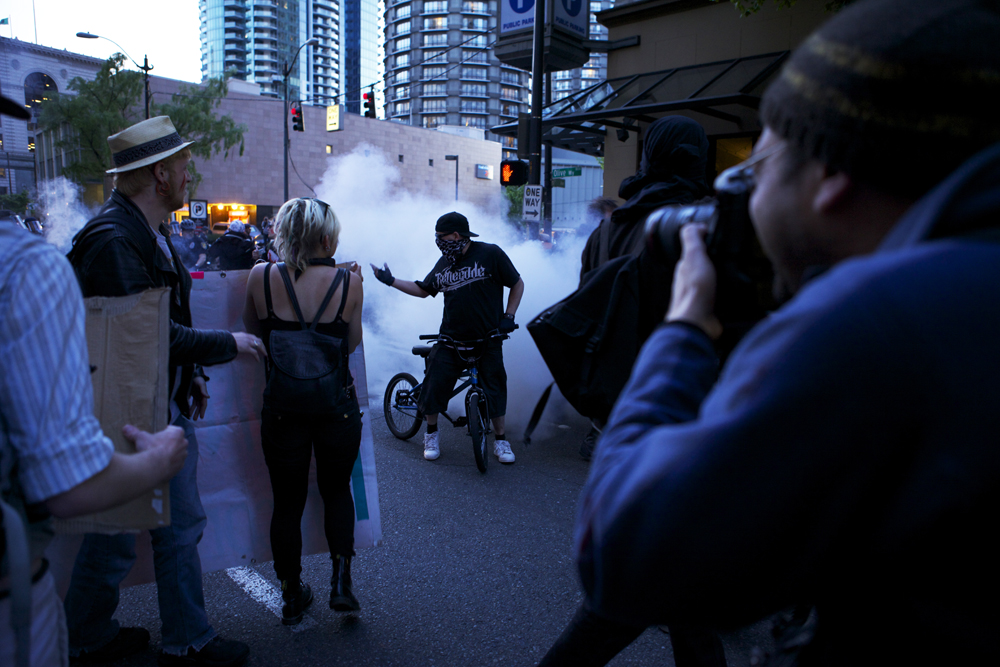Say this for the May Day anarchists: They know how to hold a city hostage.
Their actual numbers are few. As the riotous evening march began at Seattle Central Community College last night, there were more journalists than protestors, as SW’s Matt Driscoll reported from the scene.
The trucks of TV news crews lined the block. Scores of print journalists—every outlet in town sent at least one reporter and sometimes many—came with notebooks and cameras ready, just as they had earlier in the day at the immigration rights rally and march. The press felt they had to be out in force—day and night—just in case a repeat melee broke out this year, which of course it did. Obviously, the police felt they had to be out in force.
And what message did the anarchists convey with all this attention upon them? None. Same as last year. Journalists tried to engage protestors to find out what was motivating them. Dripping with contempt, spraying silly string, the anarchists wouldn’t talk.
And now, the bottle-thowing, window-smashing, “fuck-the-police” fringe is going to get even more attention as the inevitable navel-gazing and finger-pointing begins. The fact that the Seattle Police Department is under the spotlight, given the court-ordered settlement with the Department of Justice, ensures that.
But let’s all keep one thing in mind: As civic disturbances go, this rates near the bottom in terms of importance. Consider a few of Seattle’s past incidents.
Mardi Gras, 2001. This was real, ugly violence. Savage beatings broke out amid a drunken crowd in Pioneer Square. One man died to rescue another under attack. Talk about questions of police conduct. Officers held back amid the viciousness, watching from the perimeter. They were under order from then chief Gil Kerlikowske (now the nation’s drug czar), who was on the scene himself but standing still–“like someone had nailed his shoes to the ground,” as an officer on the scene described it to SW at the time. The police guild subsequently voted no confidence in the chief.
WTO, 1999. There were issues of international importance under debate here. Trade agreements had a lot of people worried about an economic race to the bottom, with ever-sinking wages and working conditions. Outsourcing was cutting away at American jobs. Tens of thousands of leaders and protestors from around the world converged on Seattle, and they were plenty interested in talking to the press about the messages they wanted to convey. Some tried to disrupt the meeting. Other turned to vandalism. Police didn’t know how to handle it all, and ended up trampling on civil rights.
Rodney King riot, 1994. People were angry for a specific reason that said a lot about race relations at the end of the millennium. In Los Angeles, four officers had just been acquitted of charges related to the brutal and videotaped police beating of King, an African American. The seeming injustice sparked riots nationwide, including in Seattle.
So, yes, go ahead and assess how police handled this latest test. It might help show what SPD has, and hasn’t, learned about use of force. But other than that, the biggest lesson seems to be the outsized response that can be stirred up from a small number of inarticulate malcontents.








